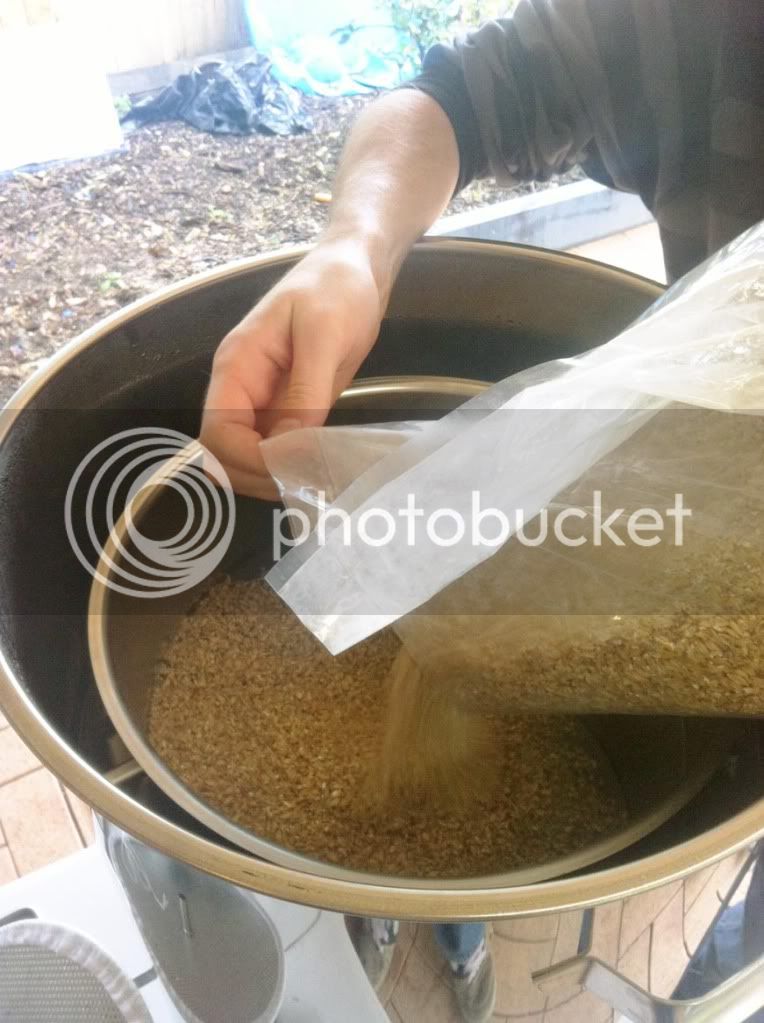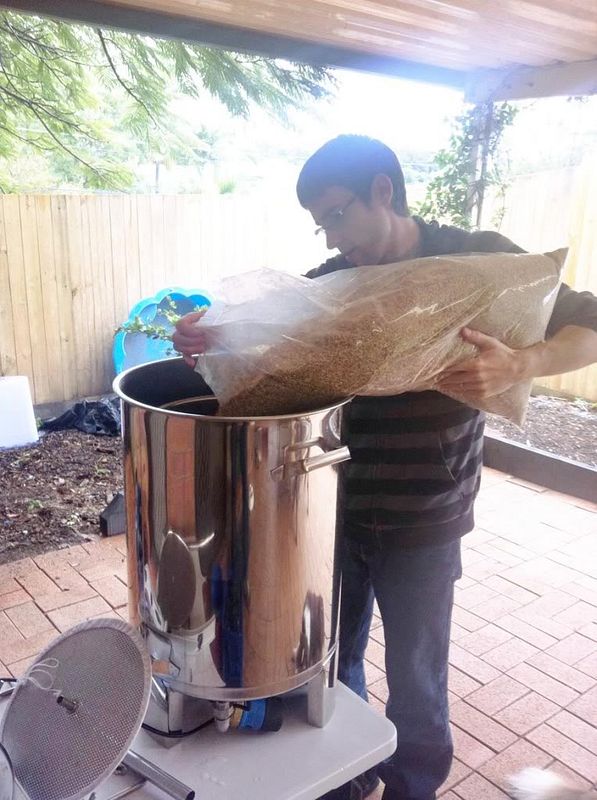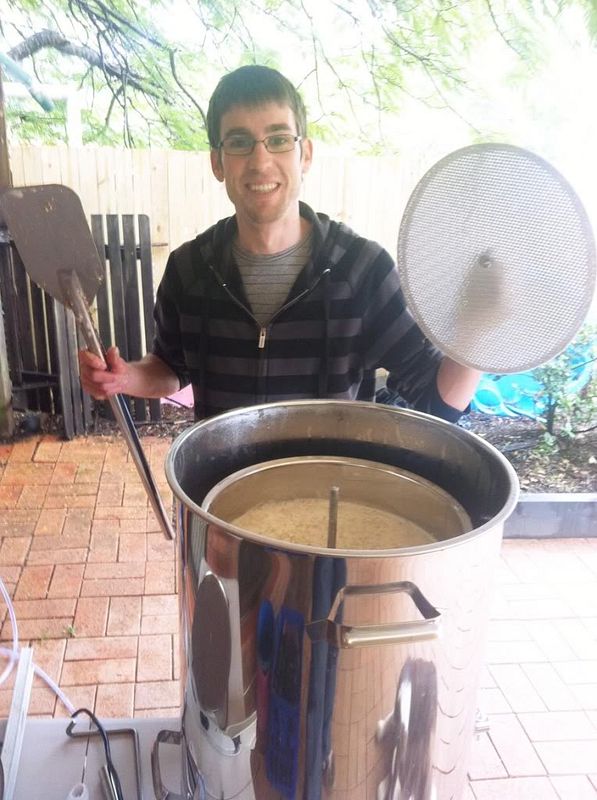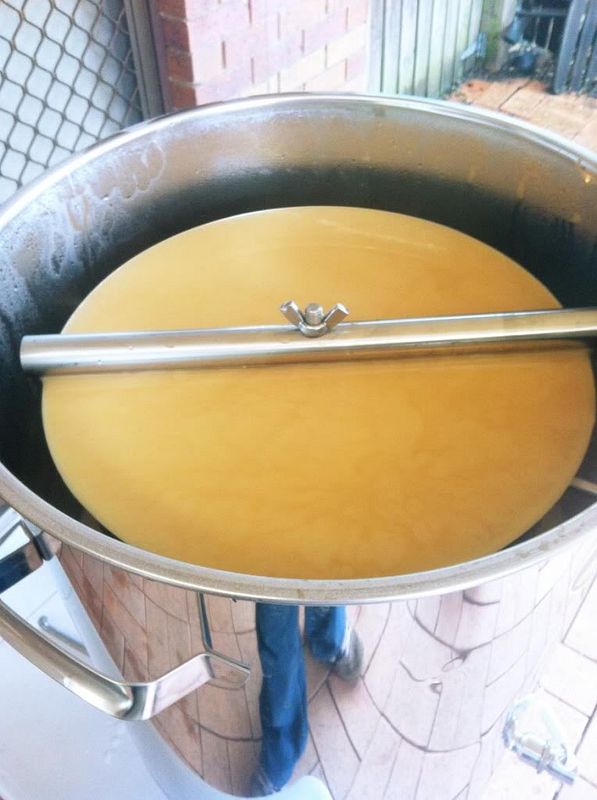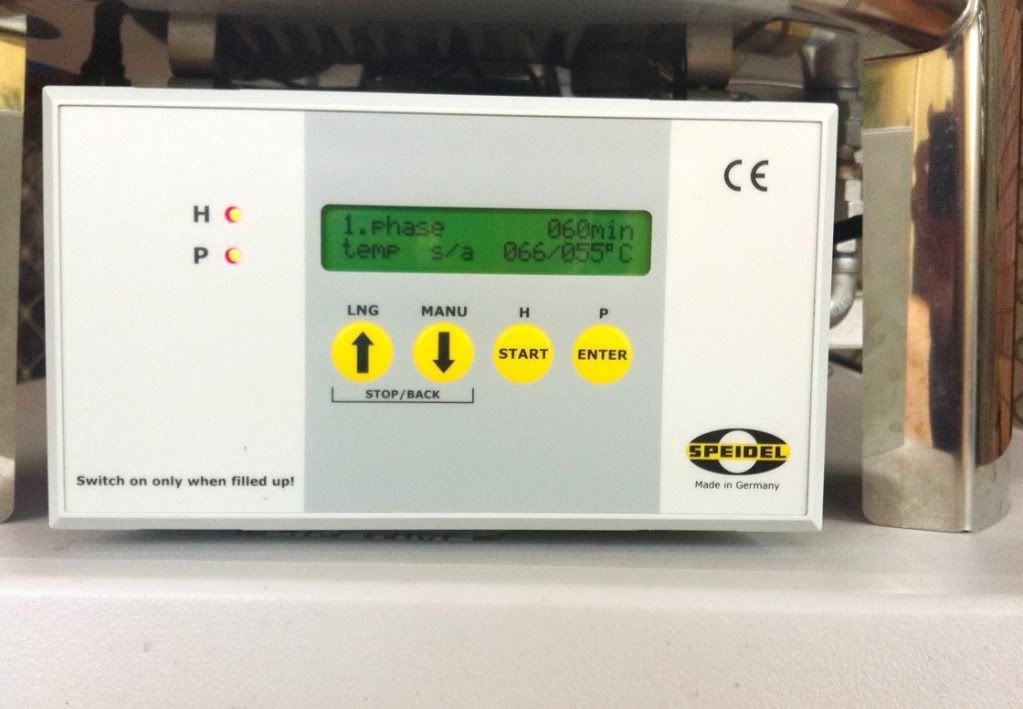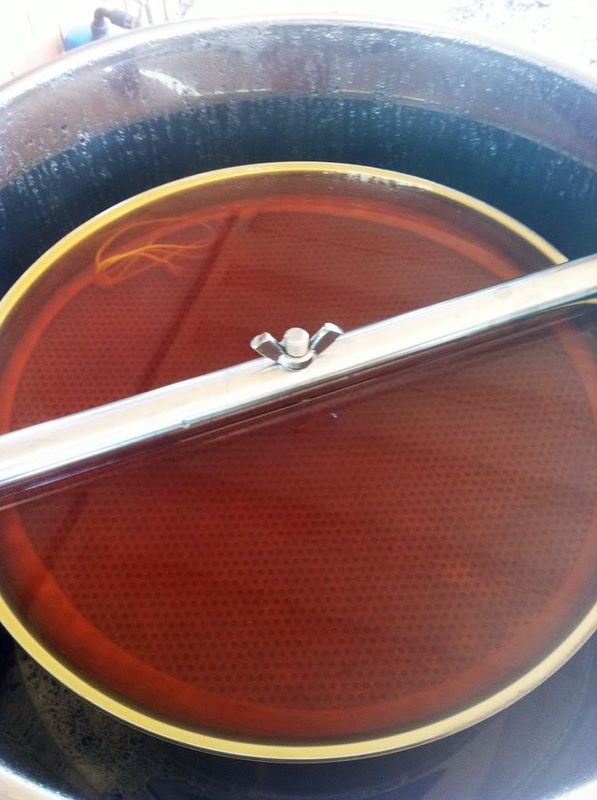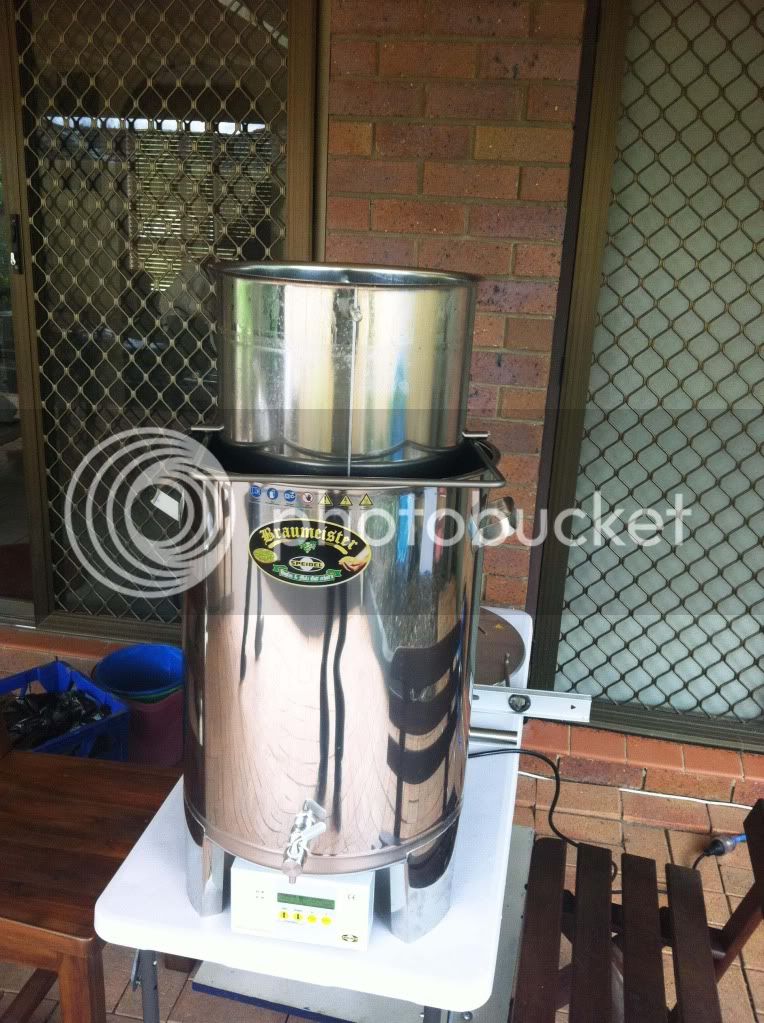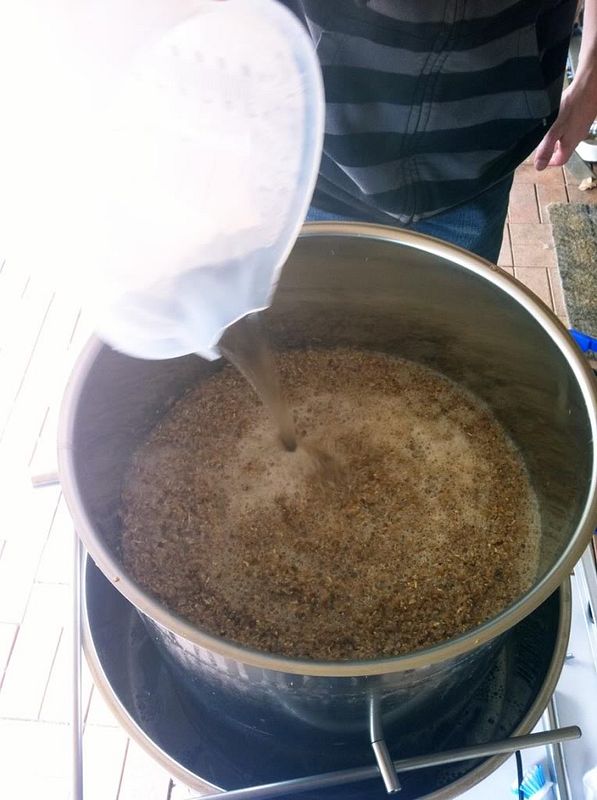Hi everyone,
I was finally able to brew on my new Braumeister so I thought I'd write a report for you here and show off the little modifications supplied by my store here in Australia. I've also posted a report
here on the Aussie Site
This 50L Braumeister is a graduation gift from my wife. When it arrived I was impressed by its compact size and quality build.
Firstly I should mention that I took my time during my first brew. It was quite a long brew day. I actually don't think the BM will save me much time, but it is much easier and I can leave it to mash / boil unattended while I do other things (like bottle a previous batch), and clean up is quite simple. But time saving wasn't why I purchased this system. My main reasons were consistency batch to batch, full electric brewing, and size.
Also, I'd like to disagree with those that think the BM is an automated system and therefore the brewer is hands off / less involved. I still mixed the mash at dough in, did a small manual sparge and added hops to the boil. Compared to a my old 3v system, the only things I didn't do was to calculate strike temp, manually recirculate and clean 3 vessels and extra hoses and taps (also I didn't have to constantly tweak gas output for the boil or worry about boil overs). I still had all the joy of being the brewer, I just used a machine to recirculate and hit temps. Essentially it allows me to do the fun parts of brewing without some of the annoying parts. I think its basically the same as any herms or rims system, just it all happens in the one vessel (ie, mash in then set temps and allow to recirculate and ramp up).
Anyways... on to the brew!
In with the malt!
Here is a photo showing the size of the unit (I'm about 5 foot 10). Its compact, but not small. Also, you can see the nice draw string upgrade MHB adds to the filters. These make life SO much easier than the standard filters and the workmanship is equal to the quality of the BM.
An idiot with his new toy. Again you can see how much easier the draw string makes handling the filters and keeping them correctly located. This image is just after stirring in the mash.
Here is the wort shortly after recirculating begins. This is a Dr Smurto's Golden Ale.
The computer showing that we're warming up from mash in at 50 degrees to the first rest at 66. The BM seems to ramp at about 1 degree per minute. This was with no insulation, on a breezy day of about 15 degrees. I'm happy with that, but I'll experiment with insulation too

About half way through the mash, crystal clear wort... nice!

Lifting the malt pipe was a *****. Even with two blokes it was awkward. The suction was the killer. I plan to make a little bench for my BM with an overhead manual winch. This means I'll be able to brew solo if needed too.
After the mash had drained for 5 mins or so I sparged (a rinse really) the grains with 1L per kg of malt at 80 degrees. This didn't make the wort cloudy like I feared it might (rinsing in the opposite direction to the recirculation flow).
The boil went well. Its not a raging boil, quite gentle really. But it is constant and did give me at least 10% boil off. I whirlpooled then cooled using a plate chiller via gravity into a 60L fermenter. I only extracted 43L rather than the 50L I planned, but my efficiency was still over 85% (mash efficiency). I'm very pleased with that! Also the whirlpool worked very well despite all the elements at the bottom of the BM. I ended up with 43L of clear 1.057 wort.
Cleaning was a breeze apart from the elements inside the BM. These had a light coating of break material the needed to be wiped off, a fiddly job as there are so many element coils. I think in the future I might recirculate some warm PBW after a quick hose out while I clean up the rest of the brew gear and aerate / pitch yeast etc. I think this would clean the elements and pumps well. Tipping the unit upside down and quickly dismantling the pumps for a rinse was a breeze.
All in all a very successful brew day. I can see the BM will add a great level of control to my brewing and I'll be able to learn a lot by having predictable gear and repeatable processes. This should allow me to tweak recipes and actually track the differences.
Anyways, this has been long enough, thanks for reading. Any comments or questions welcome!
Cheers,
Dave.



